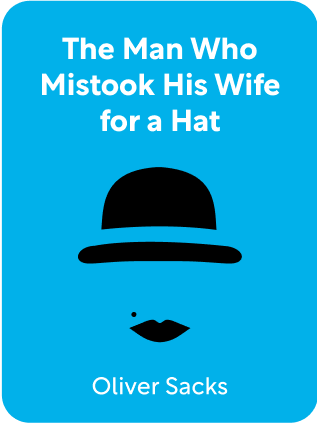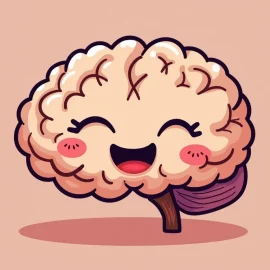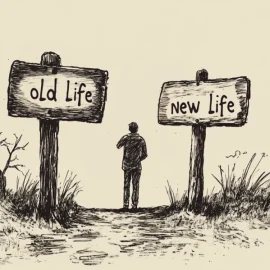

This article is an excerpt from the Shortform book guide to "The Man Who Mistook His Wife for a Hat" by Oliver Sacks. Shortform has the world's best summaries and analyses of books you should be reading.
Like this article? Sign up for a free trial here .
What did psychologist Oliver Sacks’ research reveal about the frontal lobe? How is the frontal lobe related to spirituality? How was an elderly, deaf woman able to hear music from her childhood?
In his book The Man Who Mistook His Wife for a Hat, Oliver Sacks explores the complexities of the frontal lobe. One of his patients is an 88-year old woman whose seizures caused her to suddenly remember a song from her youth that she didn’t even know she knew.
Keep reading to learn more about the mysteries and revelations of the frontal lobe.
The Frontal Lobe
In this article, we’ll explore another dimension of how neurological abnormalities reshape the human experience: through our dreams, revelations, and visions, i.e. the frontal lobe.
Many of us have entered such mystical and otherworldly states before—an old memory suddenly unearthed, seemingly from nowhere; déjà vu, the mysterious sense that one has lived through some present situation before; or spiritual experiences that seem to bring us face-to-face with the divine. These sublime moments are central to the human experience and have been the focus of art and spirituality throughout human history.
But what we think of as spiritual or mystical journeys have a foundation in neurology and the inner workings of our brains, specifically the temporal lobe. Indeed, there are organic determinants to our most transformative moments. Studying the cases of people who have suffered severe neurological trauma can give us insight into these phenomena and demonstrate how it is the complex interplay of transmitters, receptors, cortexes, and neurons within our brains that truly makes us human.
Frontal Lobe Stimulation: Reproductions of Reality
We should not, however, succumb to the belief that these transformative experiences are somehow cheapened or diminished by ascribing a physical, scientific explanation to them. Studying these brain functions, to the contrary, brings us closer to understanding the workings of our spirituality. For it is within our temporal lobes that we create the images and reminiscences that transport us to other dimensions and planes of being.
In the 1950s, the great neurosurgeon Wilder Penfield demonstrated that stimulation of the temporal lobes in his patients produced extraordinarily vivid auditory, visual, and even olfactory memories. They could be so powerful, in fact, as to blot out real events happening concurrently, a sort of “doubling of consciousness.”
It is important to note that these experiences were memories, not fantasies. And they triggered the same wave of emotions that the patient had experienced during the original experience. They seemed indeed to be perfect and authentic reproductions of reality. Penfield’s research suggested that the brain had a perfect record of one’s entire life experience, a way to travel back in time in one’s mind.
Many times, these memories were pleasantly evocative, allowing patients to revisit old friends, family, and scenes of their youth. But other times, the frontal lobe stimulation unearthed dreadful memories, long-suppressed, of the worst moments in patients’ lives. We’ll explore some cases of each type in this chapter.
Opening a Closed Door
Music has a great power to evoke memories and touch the soul. And in some cases, it can be the neurological link to a lost world of childhood memories and experiences. One of Sacks’s patients was an 88-year-old deaf woman named Mrs. O’C, who lived in a retirement home. She had begun hearing old Irish folk songs playing, often quite loudly, sometimes waking her up in the middle of the night.
But she could not find the radio or external source for the mysterious music. Even more curiously, she only seemed to be hearing one very particular set of Irish songs that she’d heard long ago when she was a girl in Ireland. It became clear to her that the music was playing entirely in her head.
What was Mrs. O’C experiencing? How could such a vivid musical episode come to her mind, more than 80 years after she’d heard these songs—of which she had no active memory? When he ran an EEG test on her, Sacks saw that Mrs. O’C had suffered a stroke and was experiencing temporal lobe seizures during the moments when she indicated that a song was playing. The stroke had activated long-dormant musical memories in Mrs. O’C’s cortex that transported her back to back to her early childhood in Ireland, a period of her life of which she had no concrete memories at all.
Her parents had both died before she turned five, after which she’d been sent to America to live with an aunt. Although she knew that this had been part of her life, she could never access it in her mind and had always yearned to rediscover the lost memories of her mother and her life in Ireland. As we’ve seen with other patients with neurological disorders, Mrs. O’C did not see the temporal lobe seizures as a curse—for her, they were a gift, an opportunity to regain a lost part of herself and open a door that had always been shut.
Three months later, the seizures stopped. The songs were gone and the door was closed once more. Mrs. O’C told Sacks that hearing the music in her head had been one of the greatest and most emotionally resonant experiences of her life, one for which she was deeply grateful. In her nearly ninety years, she’d lived a hard life, feeling alone, unloved, and abandoned. Now, she was comforted in the knowledge that she had been loved and cared for after all. It brought a profound sense of closure.

———End of Preview———
Like what you just read? Read the rest of the world's best book summary and analysis of Oliver Sacks's "The Man Who Mistook His Wife for a Hat" at Shortform .
Here's what you'll find in our full The Man Who Mistook His Wife for a Hat summary :
- Neurologist Oliver Sacks' case studies on patients with neurological impairments
- The remarkable complexity of the human brain and its extraordinary capacity to adapt
- How Sacks' work with his patients shows the pitfalls of traditional thinking about neurological disorders






